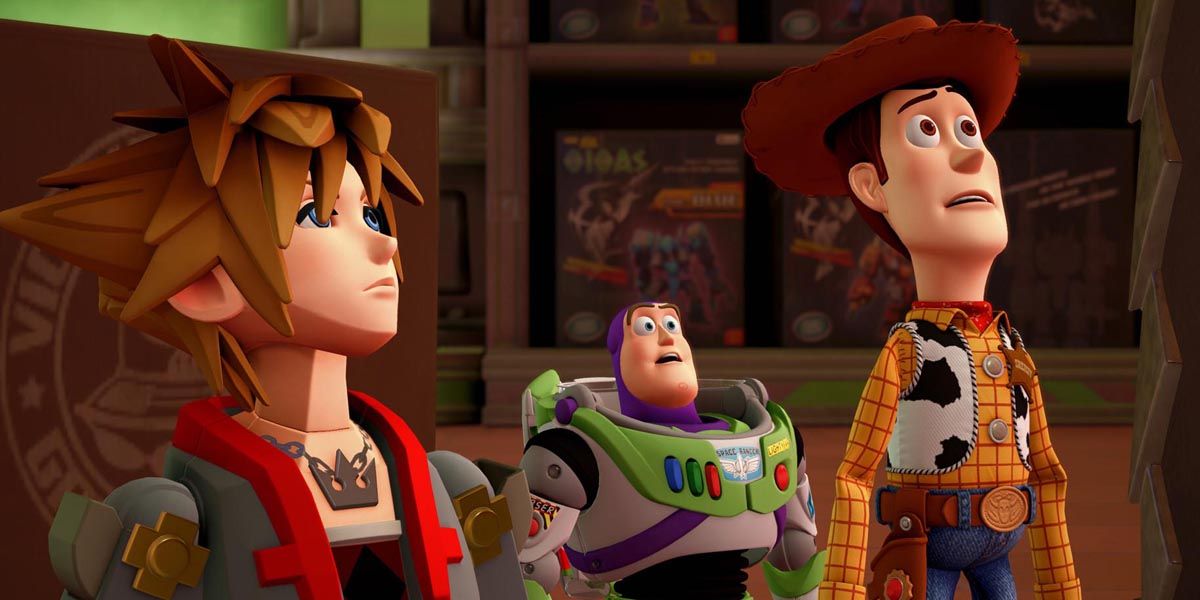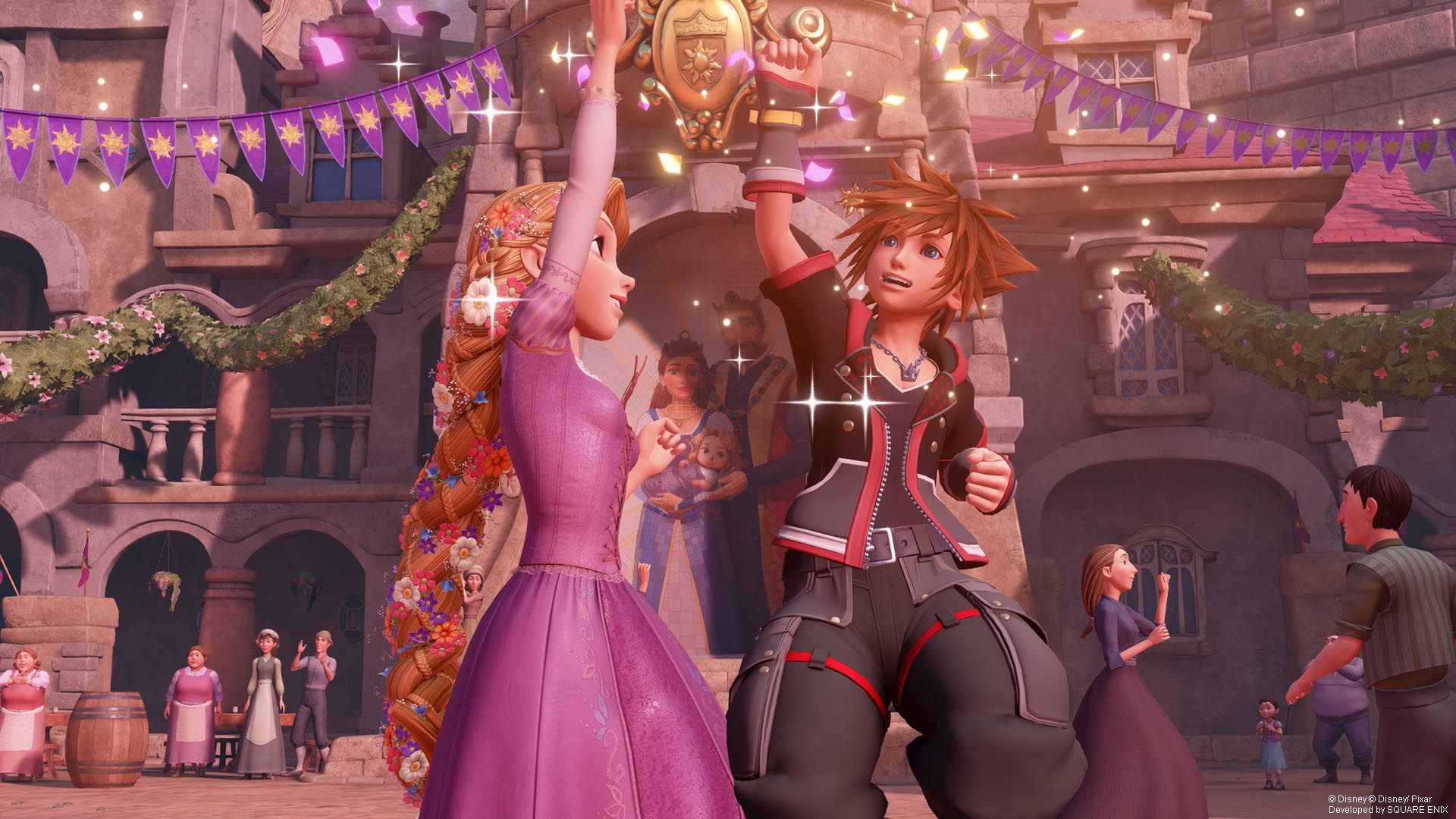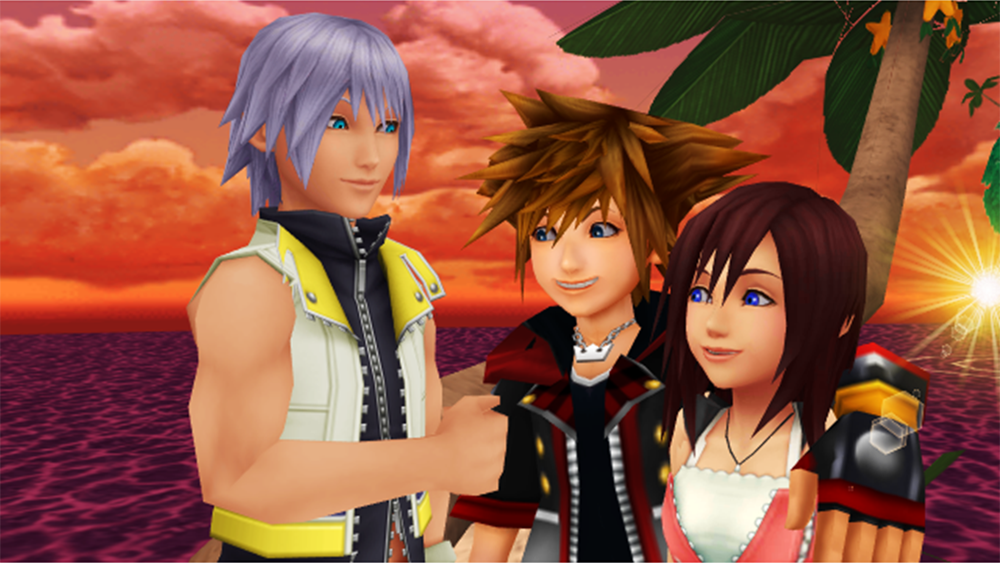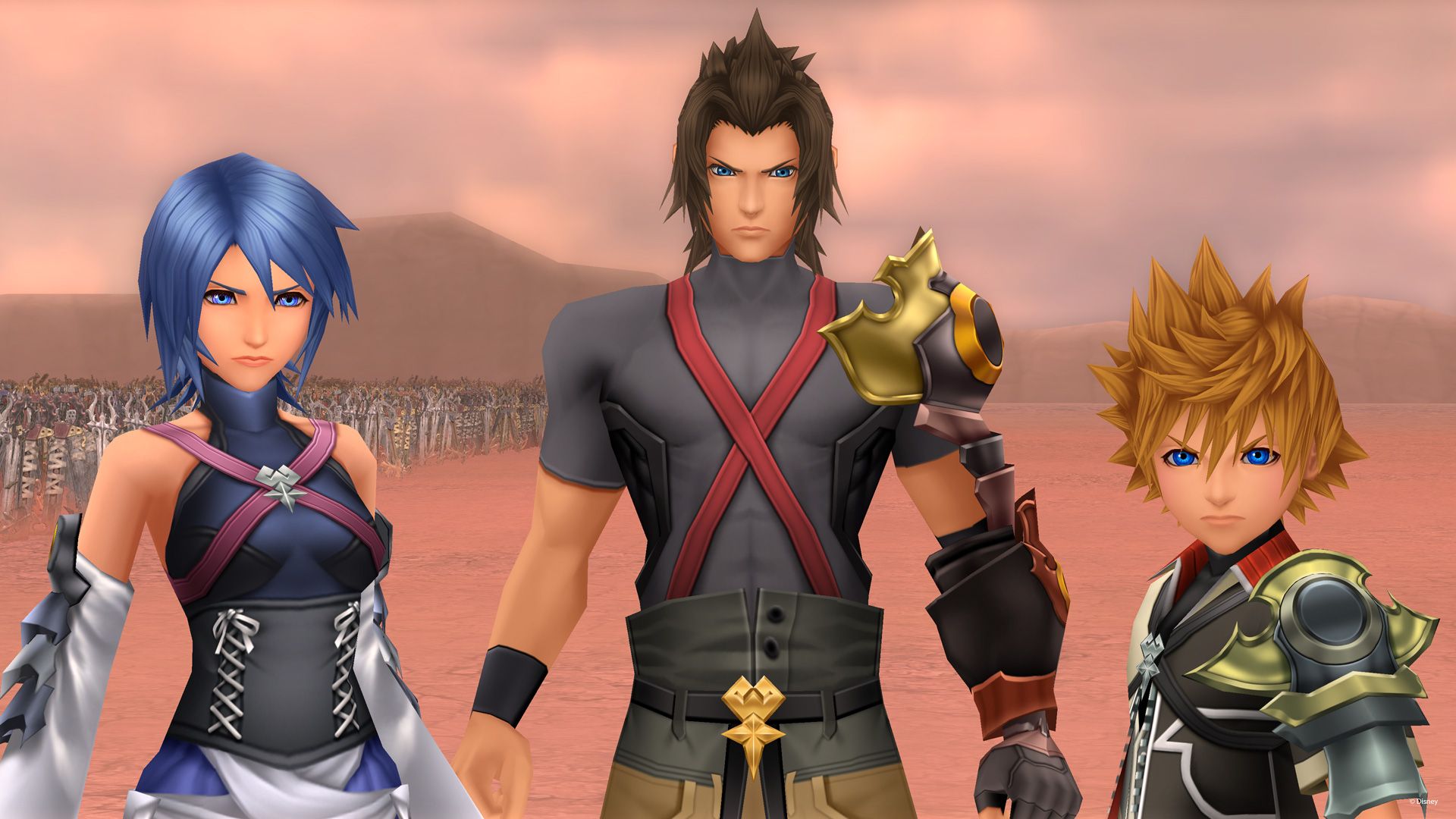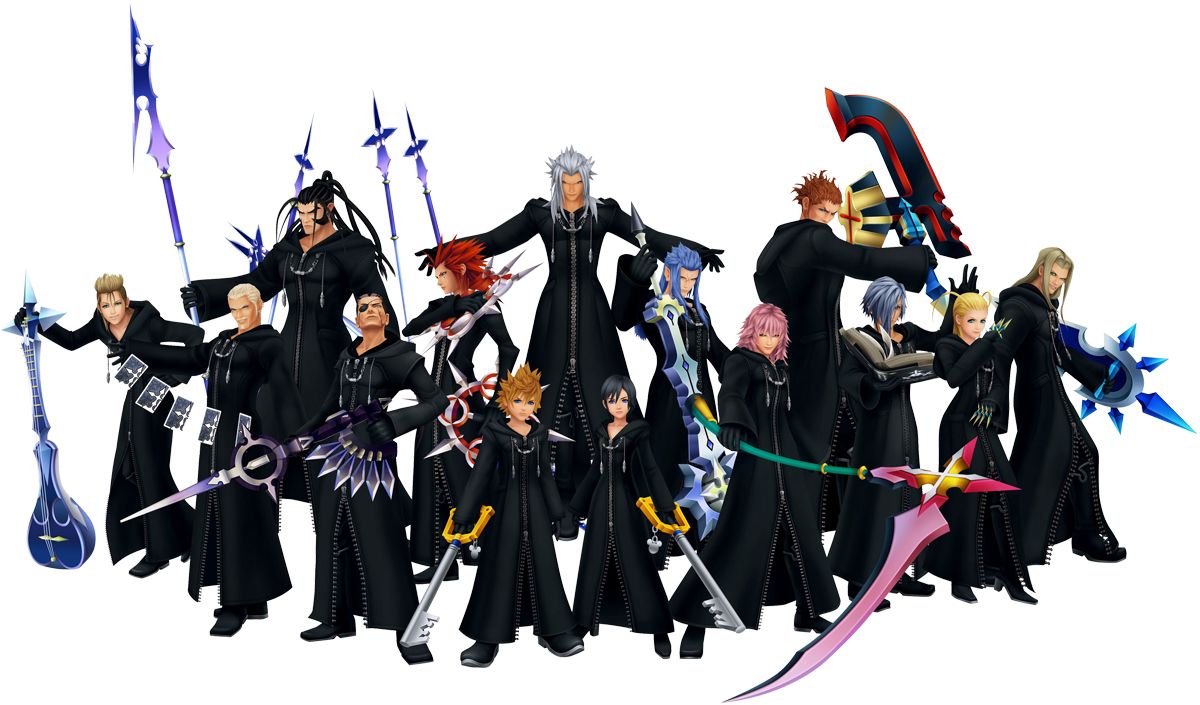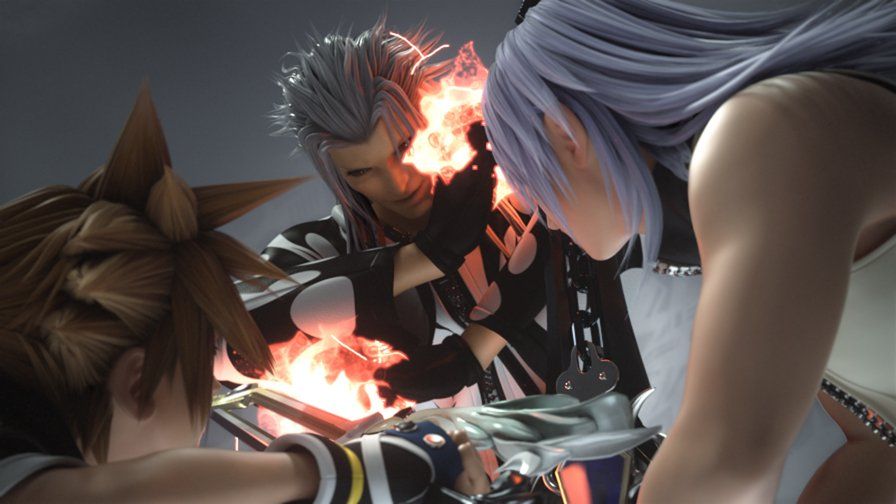So you've decided to play Kingdom Hearts III. While you may have purchased this game to team up with Wreck-It Ralph and Buzz Lightyear to fight Sephiroth, your quest is frequently interrupted by people with anime hair yelling about darkness. If this is your first Kingdom Hearts game, or if you've ironically only played Kingdom Hearts I and II, you're gonna have a difficult time trying to make sense of it all.
Fortunately, there are options: You could buy Kingdom Hearts: The Story So Far, a $90 anthology, or watch hours of Kingdom Hearts YouTube videos. But there's also the path of least resistance, which is to simply read on, as we're not only going to provide a simplified explanation of Kingdom Hearts, but also answer the question: Does the plot of Kingdom Hearts even matter?
RELATED: Kingdom Hearts III Trailer Unites Disney's "Unstoppable" Heroes
Mind you, Kingdom Hearts is deliberately convoluted. Series creator Tetsuya Nomura intentionally left vague some events and connections between characters, allowing players to use their imaginations to connect the dots, with canonical, and contradictory, explanations only appearing years later. Given the nature of the series, we're only going to be covering the touchstones. In fact, most of the Disney stuff – and literally all of the Final Fantasy content – really has no impact on the overall plot.
Let's establish the rules of the world: Kingdom Hearts hinges on hearts, which aren't literal organs, but basically emotional souls. Every heart contains both light and dark, reflecting one's morality.
Removing an individual's heart creates a Heartless, a being comprised of darkness. Conversely, the body that once housed the heart turns into a Nobody, which is basically a replicant. Destroying one's Heartless and Nobody restores the individual that created those two beings.
Additionally, memories in Kingdom Hearts can be implanted, fabricated, erased and even physically manifested. For instance, in Kingdom Hearts: Chain of Memories, Sora spends the entire game fighting through Castle Oblivion to retrieve his memories. At the end, however, Sora discovers that retrieving his memories means losing his recollection of Castle Oblivion. Therefore, everything you've done in Chain of Memories is basically for nothing. Fortunately, non-amnesiac characters are just as confused as the player throughout the series, essentially telling you not to worry about it.
The first Kingdom Hearts game focuses on three kids: protagonist Sora; Riku, the proverbial Sasuke to Sora's Naruto; and Kairi. Their home of Destiny Island is shattered when the Heartless suddenly invade through a tear in reality. Sora finds himself wielding a Keyblade, a key-shaped sword that can seal the tears and release hearts.
Destiny Island explodes, separating the kids. Sora is sent to Traverse Town, where he allies himself with King Mickey Mouse's highest mage and knight, Donald Duck and Goofy, to vanquish the Heartless across various Disney intellectual properties. Meanwhile, Riku teams up with Maleficent, who wants to control the Heartless. Kairi disappears, inadvertently housing her heart in Sora. To restore Kairi's heart to her body, Sora performs seppuku with a Keyblade, freeing his heart and Kairi's heart. Kairi, who is a DL Disney Princess, hugs the Heartless that Sora has become, restoring him to his original form.
RELATED: Kingdom Hearts III Trailer Brings Sora to Pooh's Hundred Acre Wood
The titular Kingdom Hearts is a giant, heart-shaped moon that houses the hearts of all worlds. To protect Kingdom Hearts, there is the χ-Blade, pronounced "Chi-blade," from which the Keyblades are derived. The χ-Blade allows one to unlock Kingdom Hearts; however, the blade was broken into seven pieces of light and 13 pieces of dark. Each game, thus, typically revolves around someone gathering the shards to rebuild the χ-Blade that unlocks Kingdom Hearts.
Kingdom Hearts is, essentially, like the Ark of the Covenant, with various antagonists having their own beliefs about what unlocking it actually does. Take Ansem, the true villain from the first game, who believes Kingdom Hearts is the source of all darkness, only to be immolated by light when unlocking its door.
Ansem's not totally wrong, however, as Kingdom Hearts is contained in the Realm of Darkness, a hellish void where time doesn't run correctly. Ten years before the events of the first game, in Kingdom Hearts: Birth By Sleep, the Keyblade Master Aqua sacrifices herself to the Realm of Darkness to ensure that her homie Terra escapes. Terra was possessed by series antagonist Xehanort at the time, so Aqua technically could've solved everything by doing nothing.
NEXT PAGE: Here's Where Kingdom Hearts Really Gets Confusing
At the end of Kingdom Hearts, Riku and Keyblade Master Mickey Mouse lock the door to Kingdom Hearts from within, trapping themselves in the Realm of Darkness. Mickey Mouse and Riku eventually come across Aqua, however, enabling the prequel character to return in Kingdom Hearts III.
Plot twist! Ansem was actually the Heartless created from Master Xehanort, the double-true Big Bad of the series. Xehanort was a Keyblade Master who sought to unlock Kingdom Hearts to rebuild the world with a perfect balance of light and dark. You know, basic Thanos stuff.
RELATED: Eminem's Latest Album Features a Surprise Kingdom Hearts Easter Egg
An aging wizard, Master Xehanort prolongs his life by implanting parts of his heart into others. Over time, those fragments of Xehanort gradually turn the host into Xehanort. You know, basic Voldemort Horcrux rules.
Upon discovering how to create Heartless, Xehanort (in Terra's body) creates a Heartless from himself known as "Ansem, Seeker of Darkness," impersonating his teacher, "Ansem the Wise," who is banished to the Realm of Darkness. Fortunately, that allows Ansem the Wise to magic Mickey and Riku out of the Realm of Darkness. Gathering disciples with enough darkness in their heart to potentially possess, Heartless Ansem forms Organization XIII, whose ranks are comprised of Nobodies.
What this means for you is that whenever someone has an "X" in their name, they are a Nobody of Organization XIII. Fortunately, a cipher allows you to keep track of which Nobody is linked to what character. For instance, "Roxas" is just an anagram of "Sora" with an "X" thrown in. Also, if someone has yellow eyes, then they're a Xehanort Horcrux.
Oh, Roxas is a Nobody that Sora unintentionally made when restoring Kairi's heart in Kingdom Hearts. Kingdom Hearts II makes you play as Roxas for an ungodly long tutorial, making Roxas the Nobody that nobody likes. The sole person who actually likes Roxas is Axel, Roxas' Organization XIII teammate who wields wheel-knives as weapons. Roxas fuses with Sora to restore his memories, but still exists within Sora. Or does he?
RELATED: 15 Reasons to Replay the Entire Kingdom Hearts Franchise
See, there's Ventus, Xehanort's battered apprentice who self-detonates in the prequel game. Sensing Ventus' weakened heart, an infant-age Sora houses Ventus' heart within himself. That's how Sora gets a Keyblade in Kingdom Hearts and why Roxas doesn't look like Sora. Technically, Ventus' heart should've been released when Sora stabbed himself in Kingdom Hearts, but whatever.
Anyway, Xehanort believes that Organization XIII could be the 13 shards of darkness needed to rebuild the χ-Blade, with the seven shards of light referring to the fabled Seven Princesses of Heart. These princesses' hearts are devoid of darkness, despite the narrative establishing that no heart is wholly light or dark. Conversely, the seven shards of light could refer to the Seven Guardians of Light, the main Keyblade wielders of the series.
At the end of Kingdom Hearts II, Sora defeats Xemnas, the Nobody of Ansem, Seeker of Darkness. Because his Heartless and Nobody were defeated, Master Xehanort is resurrected.
During the penultimate game, Kingdom Hearts 3D: Dream Drop Destiny, Sora and Riku take the Mark of Mastery exam conducted by Master Yen Sid (that's "Disney" backward), required to become a Keyblade Master.
By the way, Xehanort can time-travel now. So Heartless Ansem goes back in time to visit Young Xehanort, instructing him to recruit ten versions of himself throughout time to form the true Organization XIII, called, uh, the Real Organization XIII.
Short one Xehanort, Xehanort snatches Sora for indoctrination, prompting Riku and Axel/Lea to intervene. For saving Sora, Riku passes his exam, while Lea begins Keyblade training alongside Kairi.
For almost being possessed however, Sora is denied the title of Keyblade Master. Instead of going all Darth Vader, Sora – whose memories have been conveniently lost, again – sets out to become a Keyblade Master, bringing us to the start of Kingdom Hearts III.
Speaking in broad strokes, that's basically everything, excluding all of The Matrix and Inception nonsense. We realize that we've been all over the place in terms of chronology, but that's Kingdom Hearts. But does the plot even matter?
Remember, Kingdom Hearts was born when a Disney employee and a Square Enix employee stepped into the same elevator. Kingdom Hearts both reveals its plot in retcons, but also maintains continuity by explaining why Mickey Mouse is shirtless for one cutscene in Kingdom Hearts 15 years later in Kingdom Hearts 2.8: Final Chapter Prologue. Just as Kingdom Hearts' levels are made up of abstractions of Disney films, so should you just recall the broad strokes of Kingdom Hearts.

